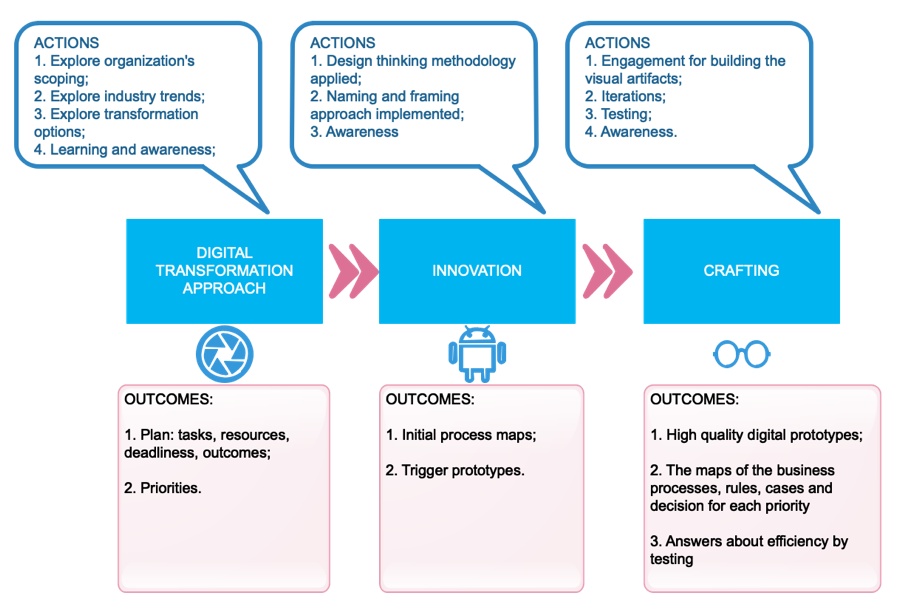Digital transformation and innovation have been part of management practice for the past 10 years. Nonetheless, the results have been mostly modest. Moreover, more than 70% of the outcomes have been insignificant. We identified two main preconceptions (or rather misconceptions) that might explain this situation:
- The culture of innovation cannot be created.
- Digital innovation cannot be implemented; it is a theory without a clear methodology.
This article investigates these myths and tries to explain possible solutions based on the expertise and experience of the Axiobit team of professionals.
Creating a culture of innovation
We tried to give some detailed insights in another article. Here we want to briefly explain the solutions. There are two main practical elements that can decisively contribute to creating a culture of innovation:
- Discipline during all the innovation processes.
- Prototyping “business-as-usual” .
We used to say that the culture of innovation is a culture of group experimentation and personal accountability, as well as a culture of prototype. Any other approach has failed.
Here I re-cite Gary Pisaro’s HBR piece:
“The reason, I believe, is that innovative cultures are misunderstood. The easy-to-like behaviors that get so much attention are only one side of the coin. They must be counterbalanced by some tougher and frankly less fun behaviors. A tolerance for failure requires intolerance for incompetence. A willingness to experiment requires rigorous discipline. Psychological safety requires comfort with brutal candor. Collaboration must be balanced with individual accountability. And flatness requires strong leadership. Innovative cultures are paradoxical. Unless the tensions created by this paradox are carefully managed, attempts to create an innovative culture will fail.“
Crafting innovation
Crafting innovation refers (in our perspective) to a permanent concern to build something visually. Any outcome of the process should be visually touchable, understood by all team members and assumed by the entire organization.
Building is thinking!
Innovation can be crafted by using technology and visual artifacts for stimulating thinking and by creating the framework to develop “logical leaps”. The thinking process is often forgotten or mistreated in the projects’ or initiatives’ plans. No wonder the success rate of digital transformation projects is so small.
Axiobit view on this process is presented in the figure below.

As a matter of fact, Axiobit has introduced a craft sequence that creates favourable circumstances for success. This methodology is built on the way in which people think and understand reality.
In fact, the core of crafting innovation was famously described by Antoine de Saint-Exupery:
“If you want to build a ship, don’t herd people together to collect wood and don’t assign them tasks and work, but rather teach them to long for the endless immensity of the sea.“
